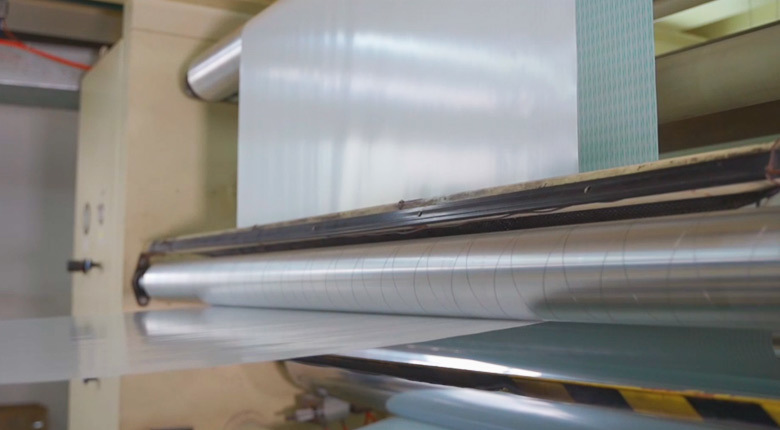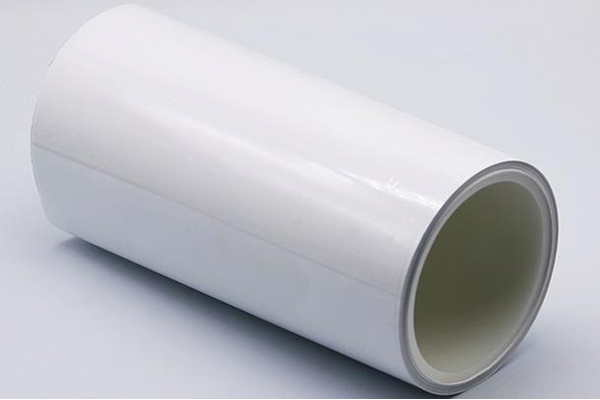What are the main product characteristics of commonly used release papers?
Release time:
2025-01-06
Release paper is a type of anti-adhesive paper that prevents the prepreg from sticking together and protects the prepreg from contamination. Here are the common product characteristics of release paper:
Release paper is a type of non-stick paper that prevents the adhesion of prepreg materials and protects them from contamination. Here are the common product characteristics of release paper:
1. Isolation Performance
Good non-stick properties
The main function of release paper is to provide an isolation effect, preventing adhesives or other sticky substances from adhering to it. This is achieved by coating a layer of special release agent on the surface of the paper. For example, when making adhesive tape, the release paper covers the adhesive layer, allowing the tape to be easily unrolled and rolled up when not in use, without the adhesive layers sticking to each other. This non-stick performance ensures the convenience and usability of sticky products during storage and transportation.
The type and coating amount of the release agent can affect the non-stick effect. Common release agents include silicone release agents and non-silicone release agents. Silicone release agents can provide excellent non-stick performance, suitable for products with high adhesive requirements, such as strong double-sided tape. Non-silicone release agents are used in special occasions sensitive to silicone, such as packaging electronic components, to prevent silicone components from migrating to the product surface and affecting its performance.
Stable Isolation Layer
The isolation layer of release paper has good stability, maintaining its isolation performance under different environmental conditions. Whether in high temperature, high humidity environments or in low temperature environments, release paper can effectively prevent adhesion. For example, in some storage environments in tropical regions, where temperature and humidity are high, release paper can still ensure the normal storage of sticky products. Similarly, in cold environments, the isolation performance of release paper will not fail due to lower temperatures.
2. Physical Performance
Paper Strength
Release paper usually has a certain strength to withstand operations such as stretching, friction, and folding during the production process. The strength indicators of the paper include tensile strength, tear strength, and burst strength. For example, in the label production process, release paper needs to have sufficient tensile strength to run smoothly on high-speed labeling machines without breaking due to tension. At the same time, tear strength and burst strength are also very important to prevent the paper from being accidentally torn or damaged during handling and use, affecting product quality.
The fiber structure of the paper and the quality of the raw materials are key factors affecting strength. High-quality release paper usually uses long-fiber wood pulp as raw material, and through reasonable papermaking processes, the paper has high strength. In addition, some special-purpose release papers may also add reinforcing fibers or undergo multi-layer composites to further improve paper strength.
Size Stability
Release paper can maintain good size stability under different temperature and humidity changes. This is very important for some applications that require high dimensional accuracy. For example, in the production of film for electronic devices, the size stability of release paper can ensure the accuracy of cutting and fitting during the film application process. If the release paper undergoes size changes due to environmental variations, it may lead to size deviations in the film, affecting the final use effect of the product.
The manufacturing process of the paper and the chemical additives added can improve its size stability. For example, by adding an appropriate amount of wet strength agents and water-resistant agents to the paper, the swelling and deformation of the paper can be reduced during humidity changes. At the same time, controlling the drying degree of the paper and the fiber arrangement direction during the papermaking process also helps to improve size stability.
3. Chemical Performance
Chemical Compatibility
Release paper needs to be compatible with various chemical substances, including adhesives, inks, coatings, etc. In different applications, release paper may come into contact with different types of chemicals, such as acrylate adhesives, rubber adhesives, solvent-based inks, etc. It should not chemically react with these substances, thus ensuring its own performance and the quality of the packaged products. For example, when making films for automotive interior parts, the release paper needs to be compatible with both the coatings on the interior parts and the adhesives of the films to prevent chemical reactions that could lead to discoloration or loss of adhesion.
The coating and selection of raw materials of the paper determine its chemical compatibility. When designing release paper, targeted coating treatments or suitable paper raw materials are selected based on the chemicals it may come into contact with. For example, for applications that frequently contact alkaline substances, paper with alkaline resistance is chosen, and a release agent that can resist alkaline erosion is coated on the surface.
Chemical Resistance
Release paper can resist certain chemical corrosion, protecting itself and the products it packages. For example, in the packaging of some chemical products, release paper may come into contact with small amounts of acids, bases, or organic solvents. It needs to have a certain degree of chemical resistance to prevent these substances from damaging the paper. This chemical resistance allows release paper to be used normally in relatively harsh chemical environments, extending its service life.
Different release papers have varying degrees of chemical resistance, depending on the material of the paper, the composition of the release agent, and the structure of the coating. For example, release paper treated with special fluorinated compounds can have better chemical resistance, able to withstand some highly corrosive chemicals, such as hydrofluoric acid.
4. Surface Performance
Surface Flatness
The surface flatness of release paper is high, which is very important for ensuring the quality of sticky products. When producing products such as adhesive tape and labels, a flat surface of release paper allows for even coating of the adhesive, ensuring consistent stickiness of the product. For example, in high-precision label printing, the flatness of the release paper directly affects the printing quality and labeling effect of the labels. If the surface of the release paper is uneven, it may lead to blurred printing patterns or bubbles during labeling.
The manufacturing process of the paper and the post-processing significantly affect surface flatness. During the papermaking process, using a high-precision calendering machine to calender the paper can effectively improve the surface flatness of the paper. In addition, when applying surface coatings to release paper, it is also necessary to ensure the uniformity of the coating to further enhance surface flatness.
Surface Roughness
The surface roughness of release paper can be adjusted according to different application requirements. Appropriate surface roughness helps improve the peeling performance between the release paper and the adhesive. For example, in some applications that require quick release, such as tape on express packages, the surface of the release paper has a certain roughness, which makes it easier for the tape to peel off from the release paper. At the same time, surface roughness also affects the printability of the release paper; for release paper that needs to be printed, suitable roughness can help the ink adhere better.
Surface roughness can be adjusted by changing the degree of pulping in the papermaking process, adding different types and amounts of fillers, etc. For example, adding an appropriate amount of calcium carbonate filler during the papermaking process can increase the surface roughness of the paper. Additionally, special texture treatments on the paper surface, such as embossing and sanding, can also achieve different roughness levels of release paper.
More information
Tel: 0086-513-69812188
E-mail: andy@paoyan.com.cn
Address: 188 Baichuan Road, Hai’an High-tech Zone, Jiangsu Province, China.

Sweep and pay attention to Baoyan Technology






